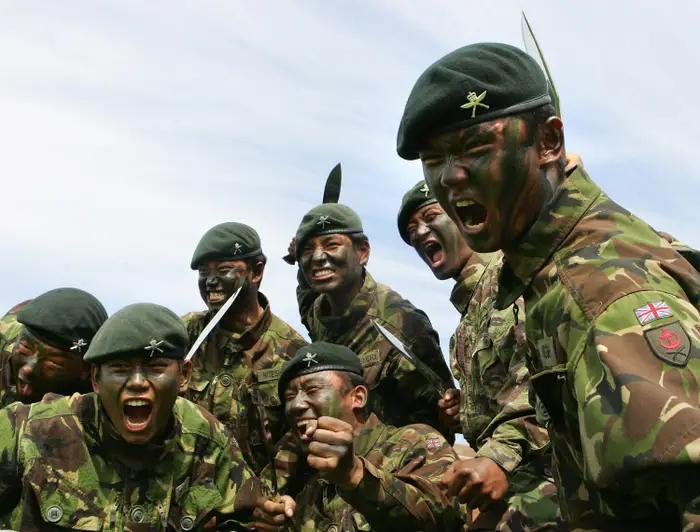Already intrigued by Nepal’s international relations and curious about its subtle yet strategic military role in the region, I found myself one afternoon in Bhaktapur speaking with a local woman. With pride in her voice, she told me about members of her family who had served as Gurkhas soldiers in the service of the British Army. Her stories were personal, moving, and full of respect. It was in that moment that I truly began to grasp the deep emotional and historical connection between Nepal and these legendary warriors. Even the name of their unit “Brigade of Gurkhas” carried a weight that sparked my desire to understand more.
Here is the story of the Gurkhas: a tradition of loyalty, resilience, and honor that has stood the test of time.
1. Forged in the Fires of Conflict
The story of the Gurkhas begins in the early 19th century. Between 1814 and 1816, during the Anglo- Nepalese War, British forces faced off against the soldiers of the Gorkha Kingdom, an ancestor of modern Nepal. British commanders, used to swift victories in colonial campaigns, were stunned by the fierce resistance and bravery of the Nepali fighters. Instead of defeating them, they chose to recruit them. In 1815, the first Gurkha regiment was integrated into the British East India Company’s forces.
The name “Gurkha” comes from the Gorkha region of Nepal, the birthplace of these soldiers. Over time, it has become synonymous with courage, discipline, and unmatched martial prowess. These qualities would be tested in nearly every major conflict the British Empire faced from that moment on.

2. Unwavering Loyalty Through Empire and Beyond
From the moment they joined British ranks, the Gurkhas proved their commitment time and time again. They played a decisive role in quelling the Indian Rebellion of 1857, remaining loyal to the Crown, and later fought in the Afghan Wars, the trenches of the Somme, Gallipoli, Burma, North Africa, and beyond.
In World War II, nearly 120,000 Gurkhas were deployed. Over 6,000 lost their lives. Their bravery became legendary, and their quiet determination earned them the respect of allies and adversaries alike.
Following India’s independence in 1947, a tripartite agreement between the UK, India, and Nepal split the Gurkha regiments between the Indian and British armies. Four regiments remained under British command, forming what is now known as the Brigade of Gurkhas.
✨ Be the Change! Volunteer with us or Contact us and help build a better future.
3. A Living Tradition in the 21st Century
Today, the Brigade of Gurkhas continues to serve, with recruits still selected exclusively in Nepal. Each year, thousands of young Nepali men undergo one of the most rigorous military selection processes in the world for a chance to earn a place.
The brigade now includes infantry, engineers, signals, logistics, and more. In recent decades, Gurkhas have been deployed to Kosovo, Iraq, Afghanistan, and on peacekeeping and humanitarian missions worldwide.
The kukri, the iconic curved knife, remains the symbol of the Gurkha warrior. But it represents more than just a weapon: it stands for endurance, humility, and a profound sense of duty.
In the villages of Nepal, having a Gurkha in the family is still seen as both an honor and a path to social mobility. For many, it’s a source of pride woven into the fabric of daily life.
A Bridge Between Worlds

The Gurkha story is one of mountain warriors becoming pillars of one of the world’s most storied military traditions. It is also a tale of cultural exchange, mutual respect, and historical complexity.
In a world increasingly conscious of its colonial past, the Gurkhas remind us that military history isn’t only about power, it’s also about relationships, courage, and the bridges that can be built between very different worlds.

